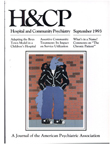Relationship Between Case Manager Contact and Outcome for Frequently Hospitalized Psychiatric Clients
Abstract
Objective: Case management services and client outcomes in seven programs based on the assertive community treatment model were examined to determine variability in the frequency and location of services, to determine the relationship of frequency of services with reduction in hospital use and with client satisfaction with services, and to identify subgroups of clients who received different patterns of services. Methods: Correlational and cluster analyses were used to examine patterns of service use for 155 clients with serious mental illness who averaged 10.6 lifetime psychiatric hospitalizations. Data were drawn from four earlier studies of the treatment model. Results: The programs varied substantially in the mean frequency of service provided. Contrary to expectations, service intensity was not linearly related to client outcomes. However, programs that delivered very low frequencies of service were ineffective in reducing hospital use. Finally, cluster analysis of service variables identified five client subgroups. These subgroups differed on demographic characteristics and mental health history but not on outcomes. Conclusions: A minimum intensity of services, individualized for each client, may be necessary to reduce hospital use for frequently hospitalized clients. Service utilization clusters may represent clients with different service needs and preferences.
Access content
To read the fulltext, please use one of the options below to sign in or purchase access.- Personal login
- Institutional Login
- Sign in via OpenAthens
- Register for access
-
Please login/register if you wish to pair your device and check access availability.
Not a subscriber?
PsychiatryOnline subscription options offer access to the DSM-5 library, books, journals, CME, and patient resources. This all-in-one virtual library provides psychiatrists and mental health professionals with key resources for diagnosis, treatment, research, and professional development.
Need more help? PsychiatryOnline Customer Service may be reached by emailing [email protected] or by calling 800-368-5777 (in the U.S.) or 703-907-7322 (outside the U.S.).



